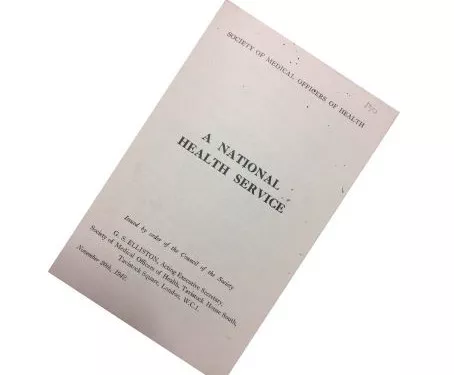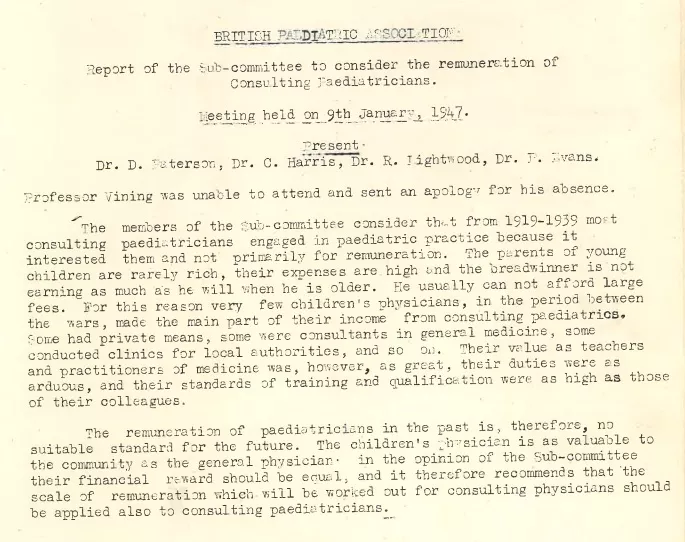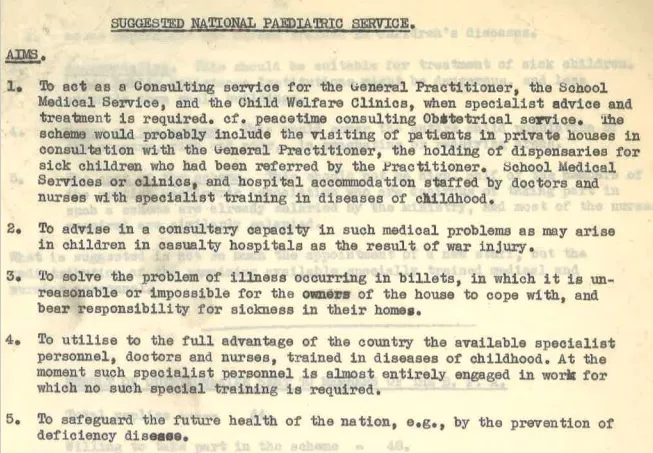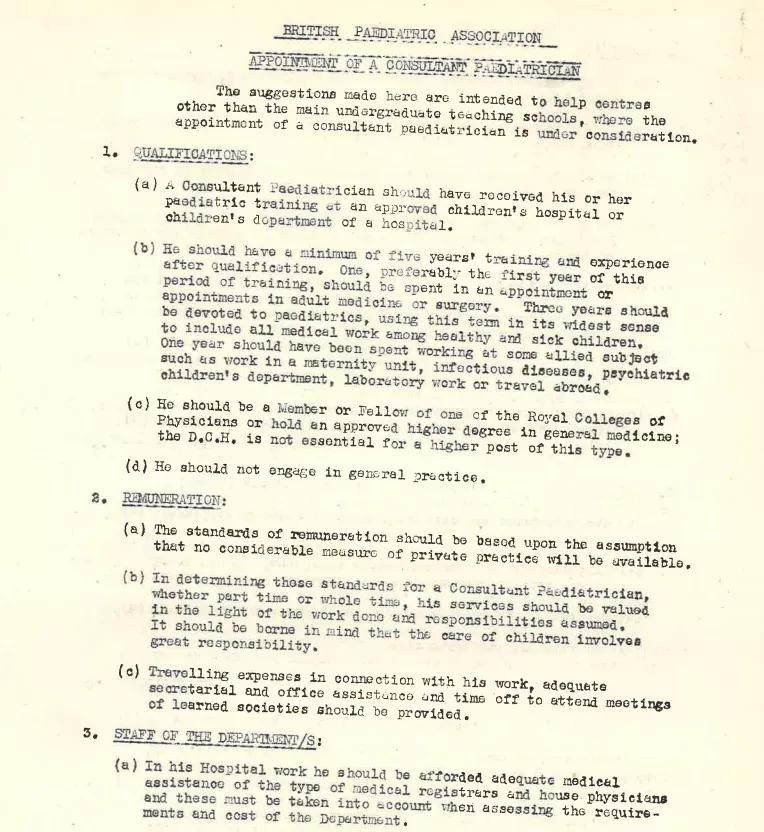
Before the National Health Service, healthcare in the UK wasn’t universal. In the Victorian era, healthcare was mainly provided by private care, voluntary hospitals funded by donations and infirmaries for the poor. The National Insurance Act of 1911 had increased provision, but children weren’t covered by the act. Hospital paediatric outpatient departments were the main source of medical advice, care and treatment for children in the 1930s.
The Minister of Health later noted that “only about half the population is provided for . . . and, particularly, millions of women and children are entirely unprovided for.” Scotland did have a precursor to the National Health Service in The Highlands and Islands Medical Service, launched in 1913 to deliver state-funded healthcare to remote and island communities.
The main income for consultant doctors in the UK at this time was from private practice, while they provided their services to hospitals in an honorary capacity. Children had always been a very small part of private practice though, and few paediatricians worked solely with children, particularly outside of cities.

During the Second World War, many of these issues came into sharper focus. In 1939, the British Paediatric Association (BPA) had sent a deputation to the Ministry of Health regarding a proposed National Paediatric Service to support evacuees.
Hospital surveys from 1941 to 1945 also showed long stay hospital provision to be disappointing. Those of all ages, including young children, were herded together.

Planning for a brighter future began and in 1942 the Government released the Beveridge Report. It included a proposal that “Medical treatment covering all requirements will be provided for all citizens by a national health service organised under the health departments and post-medical rehabilitation treatment will be provided for all persons capable of profiting by it.” A National Health Service White Paper followed in 1944, with the Minister for Health stating in the House of Commons that “It will be a fine thing for women to know that they will be free to call in a doctor for themselves and their children.”
The NHS formally began on 5 July 1948, with immediate impact on paediatric care. The GP consultation rates of women and children increased, with a memorandum from 1952 recording that not less than 30% of patients of GPs were children.1 For the first time, hospital consultants and their assistants were remunerated. Paediatricians were now able to earn similarly to other specialties and it was possible to develop a service based on consultant paediatricians in every region in the country.
The establishment of new paediatric consultant posts soon revealed previously unrequited need for paediatric consultation and new regional paediatric societies formed around the country. Over the next decade services expanded to the point where the 1959 annual meeting of the British Paediatric Association (BPA) devoted a session to The Problems of the Regional Paediatrician.

The increased need for healthcare staff in the new National Health Service was clear. There was a new “bulge” of consultant paediatricians, with almost more non-BPA paediatricians than BPA at this time (BPA membership began to widen in 1956).
In 1953, the BPA opposed the Ministry of Health’s proposal to reduce the number of senior registrars. They argued that children were surviving and needing medical care where they had previously died, that new diseases had been discovered and there had been advances in care which required more doctors. The scope of paediatrics was also widening - for example, obstetricians began to invite paediatricians into the labour room.
The new NHS looked outside the UK for staff, too. In the same year the National Health Service began, HMT Empire Windrush arrived in the UK. A year later the NHS began to recruit staff from the Caribbean.
Other changes were also happening in paediatrics at this time. Children were still often placed in adult wards, with little need felt to explain their condition to them. The BPA drew attention to the need for children’s hospitals or adequate children’s wards and separate outpatient and casualty departments for children, and was also working to bring children’s beds in infectious disease hospitals under the control of paediatricians.
The mental wellbeing of children in hospital wards became more widely discussed during this period, too. At this time, visits from parents were very limited and telephone enquiries were discouraged. Paediatricians such as James Spence and Alan Moncrieff wrote about these problems, though it would take until the 1959 Platt Report for the issue to be recognised at a governmental level and longer still for unrestricted visiting and admission of mothers with their children to be allowed.

Progress was still slow in some areas. The BPA argued for community child health staff associated with the hospital service, reasoning that better prevention of illness and promotion of child health would “help to make the children of the nation vigorous and strong”.2 Under the new NHS this was even more significant as the cost of treatment fell to the taxpayer. They were, however, unsuccessful at this time.
Nonetheless, huge strides were made in paediatrics and child health during this period. Major advances in healthcare such as new vaccines, medication and techniques had a huge impact on child health. And in 1965, Donald Paterson wrote, “In 1920 we approached a sick child armed with a stethoscope and a few drugs... the age of preventative paediatrics is upon us.”3
You can find out more information about the history of the RCPCH. If you have any questions or you would like to access our archives, please contact us at information.governance@rcpch.ac.uk.










